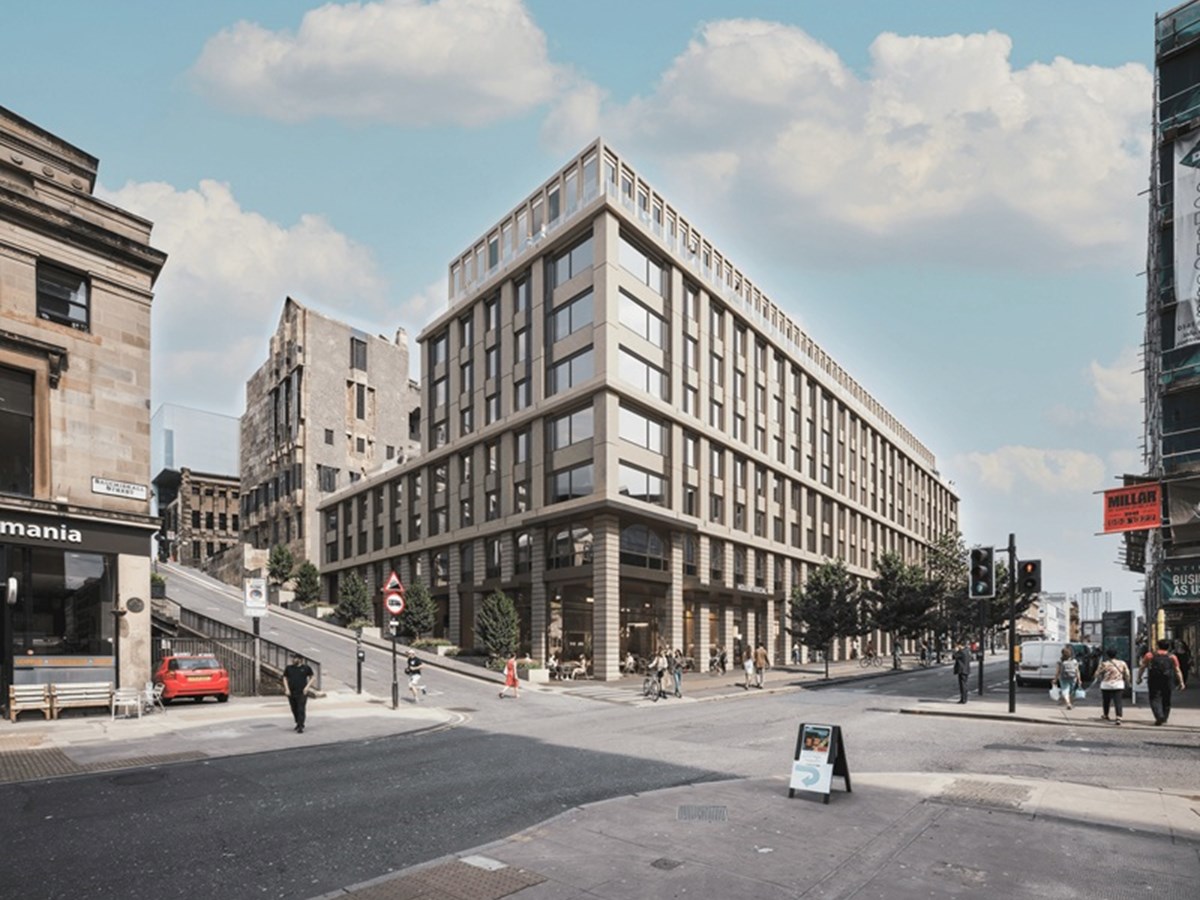Lotte Tobermann is Associate Director at GIA.
The City of Glasgow is entering a new chapter in urban development. With the recent publication of the Tall Buildings Design Guide, the city signals a bold and long-overdue commitment to vertical growth. It’s a step that reflects Glasgow’s growing confidence, not just nationally, but on the European and global stages.
At GIA, we are proud to be actively contributing to this transformation of the city’s skyline. Our recent involvement includes securing planning approval for Vita Group’s nine-storey mixed-use development at the former ABC site on Sauchiehall Street, as well as supporting the successful application for Graham Investments’ 25-storey, 410-bed PBSA development at Hydepark Street.

Graham Investments’ 25-storey, 410-bed PBSA development at Hydepark Street.

Vita Group’s nine-storey mixed-use development at the former ABC site on Sauchiehall Street
We fully support the introduction of the Tall Buildings Design Guide as a timely and essential framework. It balances ambition with responsibility, providing a structure for tall buildings that are not only architecturally significant, but contextually appropriate, sustainable, and designed to add long-term value to the city.
But with new opportunity comes increased responsibility. Tall buildings are inherently impactful – and must be delivered with technical precision, environmental awareness, and a strong commitment to place-making. The guide brings welcome clarity and expectation around what planners and applicants must now prioritise as part of a well-informed, performance-led design process.
Daylight and sunlight
The guidance rightly calls for greater consideration of how tall buildings affect the quality of light experienced at street level and within neighbouring properties. In a dense, vertical environment, access to natural light is not a luxury, it’s a determinant of health, wellbeing, and the success of mixed-use developments.
This means daylight and sunlight assessments must now be embedded early in the design process. Seasonal variation, overshadowing of the public realm, and cumulative effects across developments all need to be considered from the outset – not as a late-stage compliance exercise.
Wind
Wind analysis is one of the most critical and often underestimated elements of tall building design. In a city like Glasgow, where prevailing winds can be significant, the form and massing of new buildings must be rigorously tested for their impact on the microclimate, especially at pedestrian level.
As planners and applicants work through proposals, dynamic modelling – whether through CFD or wind tunnel testing – should be treated as essential. Early testing supports more resilient design and better public realm outcomes.
Solar glare
With the rise in fully glazed façades, solar glare presents increasing risks to both visual comfort and road safety. The guide rightly acknowledges this. For taller structures, the potential for reflected light to impact pedestrians, neighbouring buildings, or traffic routes increases significantly.
Assessing materiality, façade orientation, and seasonal sun paths during the design stage is now critical to managing this risk.
The Tall Buildings Design Guide represents more than a policy update. It is a statement of intent and a call to collectively raise standards. It gives the planning community clearer guidance on what’s expected and offers developers greater certainty on what’s supported and where.
To succeed, this vision will require strong collaboration between planners, architects, technical specialists, and developers. Performance must be given equal weight to aesthetics, and long-term value must take precedence over short-term gain.
At GIA, we believe Glasgow has the potential to be a benchmark for responsible, performance-led tall building development. We look forward to continuing to support the planning community as this next chapter takes shape.


